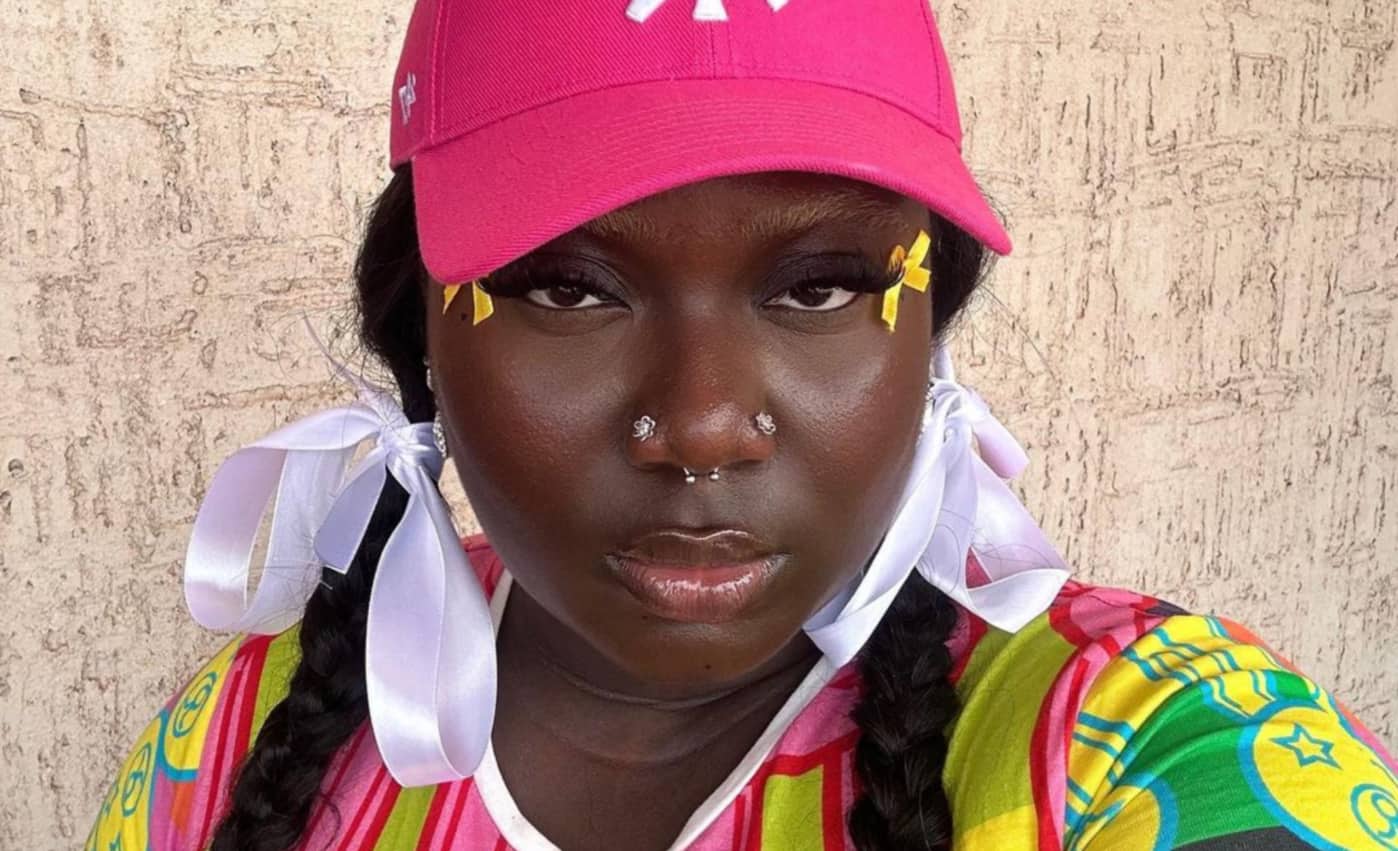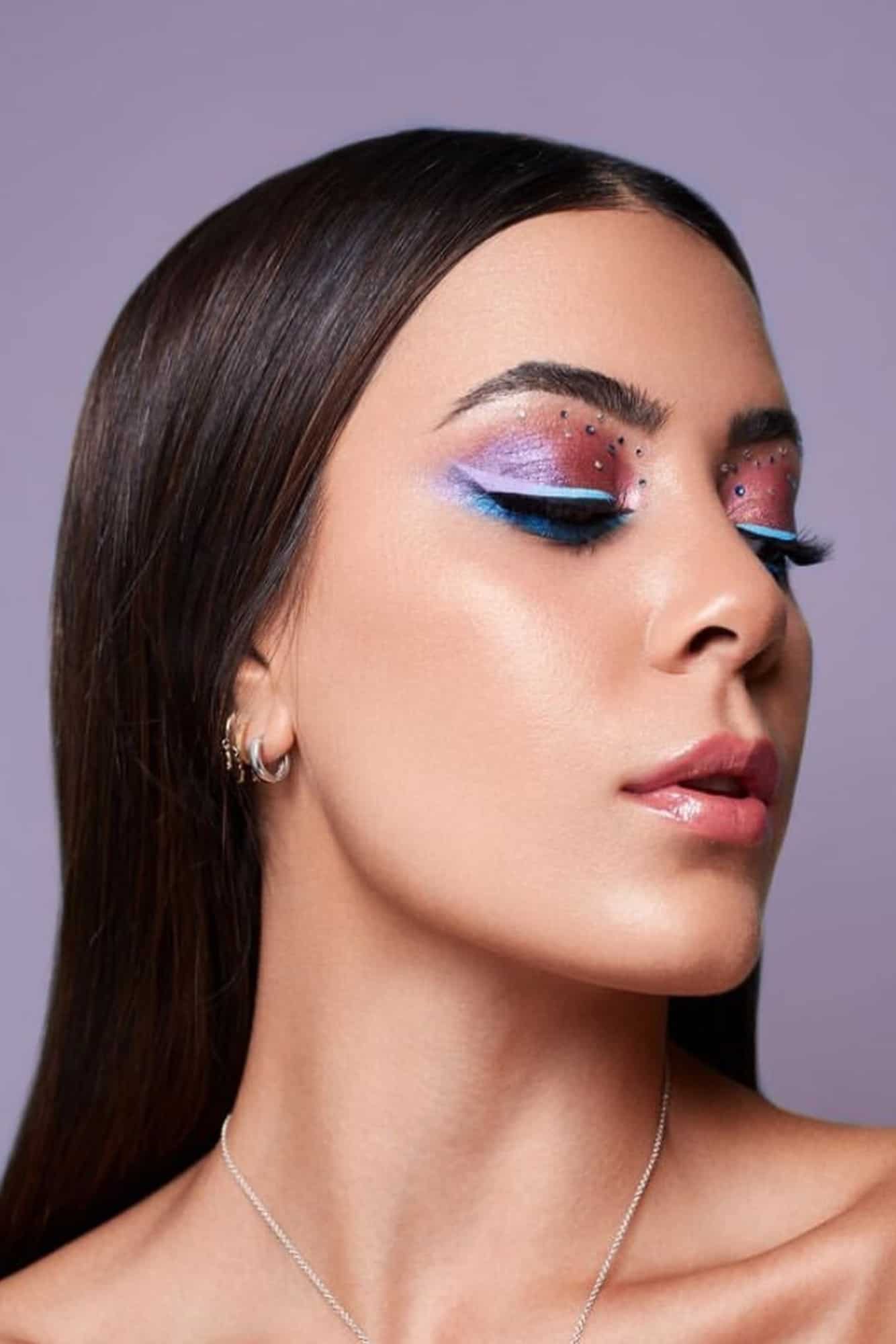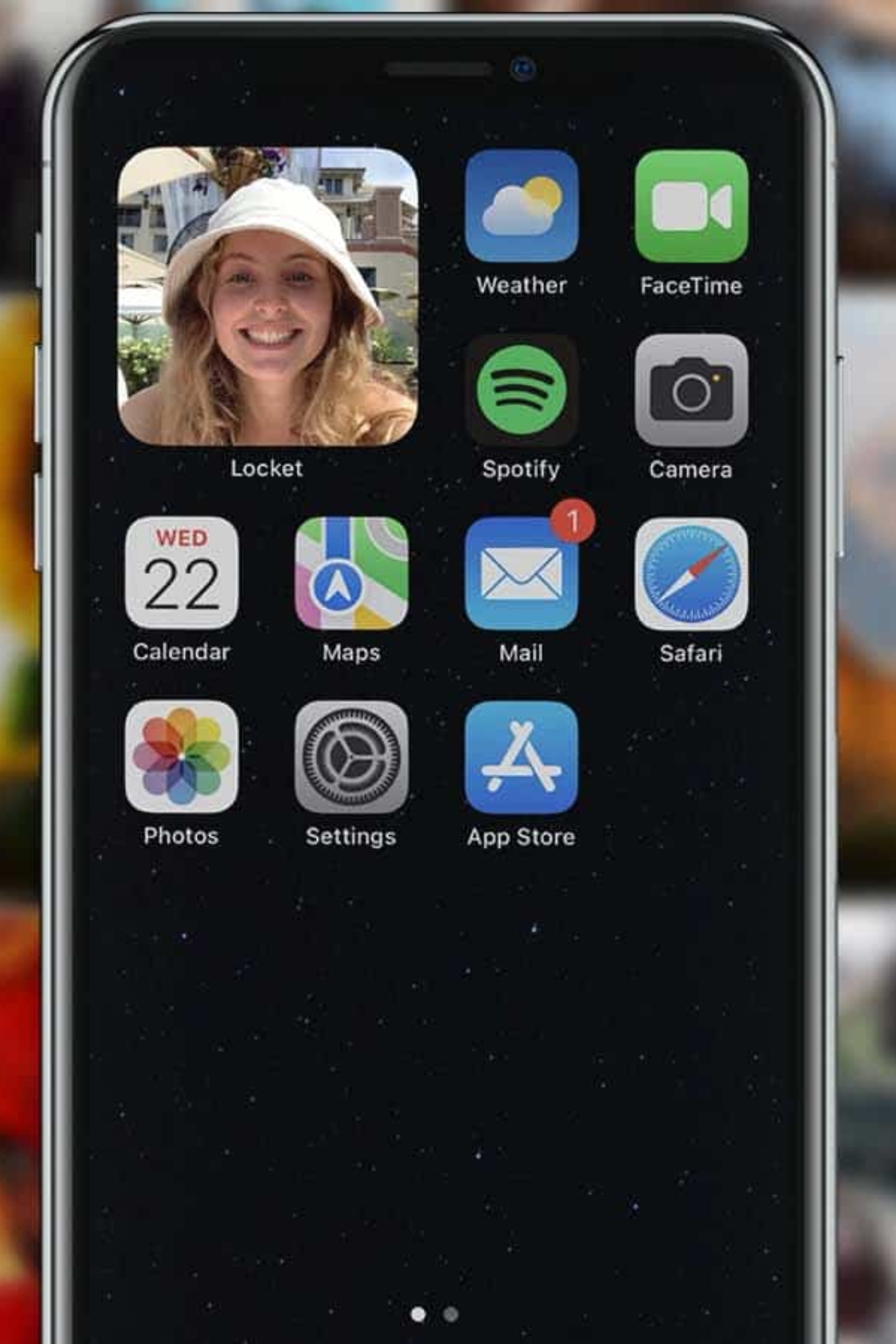In mid-April, rapper Central Cee filmed himself dancing on TikTok to a Bakar song – he has his hood up, he’s flashing a stack of dollars, so far, so #thuglife, here. But on his face? A little blue Starface Hydro-Stars pimple patch. Such is the status of the Starface brand in the Gen Z pantheon that even rappers are proud to sport them. The video has had nearly 50 million views in just a few weeks.
Central Cee, incidentally, is just one of a long line of celebrities, from Hailey Bieber (and Justin) to Nicola Peltz Beckham, Willow Smith and Florence Pugh, who have been photographed or photographed themselves with a Starface pimple patch on. If you are in any way teen-adjacent, you will have also noticed those tell-tale little stars on their teen faces; yellow stars, blue stars and, on occasion, cherries or Hello Kitty faces. The message is: “Yes, we have spots, so what?” So, who is behind the brand that has done the seemingly impossible and made acne cool? Step up Julie Schott.
Julie Schott is a former US ELLE.com beauty director who in 2019, along with her co-founder Brian Bordainick, launched Starface. But before this, and before ELLE.com, there was xoJane, the cult lifestyle website founded by Jane Pratt. Schott had always had good skin, she told Glamour in 2021, but working as a beauty editor had stressed it out, and access to myriad treatments only made it worse. Working at xoJane, Schott told Glamour, she was able to write in detail about her experience with her skin and create a community: “This was pre-Instagram, so I would share pictures on the site. It was cool because people did really connect with it. There’s so much community around that experience.”
Community-building is central to the brand, and once Instagram took off, and Schott began to plot Starface, she continued talking to her community constantly, creating an instant market. She recently told digital media site Puck News: “A year before we even had any product to sell, I was talking about Starface on my own social channels and followers were putting emojis on their selfies, saying, ‘Give me Starface, I need Starface’.”
You may also like
The acne industry then was very medicalised, formula-heavy, with serious packaging, so Starface, as a colourful, independent brand, shone brightly. But unlike other indie beauty brands, Schott and Bordainick decided to go mass market rather than staying boutique direct-to-consumer. They made big distribution deals with Target, CVS and Walmart in the US, and Boots in the UK, and made the brand attainable, to be thrown into your basket alongside your tampons and your toothpaste. Schott told Puck News: “If you go on TikTok, you see that trips to Target are an entire plotline in the lives of so many Americans. That felt very true to our own experience.” This sense of narrative, and of a brand companioning consumers through their lives, is another element in Starface’s success. Because whilst seeing celebrities donning the pimple patches is a thrill (they get spots too!) there’s also a connection when you see others out in the world wearing them. I’ve seen my own teens nod in subtle solidarity to strangers with Starface on. Schott has taken a painful process of adolescence and made it fun, taken something that makes people feel acutely self-conscious and given them something to shout about.
Given the relentless focus on connection with its community, it won’t surprise you that Starface has a huge presence on TikTok. An early adopter when there was suspicion of how the app would work for brands, it now has 2.6 million followers, more than Glossier and L’Oréal Paris combined. The brand has been a presence at relevant cultural events such as New York Fashion Week, created launches with Gen Z It girl influencers such as Devon Lee Carlson, and collaborations with Hello Kitty and British musician Pink Pantheress. It was one of the first skincare lines to harness drop culture, to prioritise play and collectability. It’s almost gamified. Beauty news site Glossy‘s reporting has the company growing its revenue by 200% in 2023. The Puck News article said: “Starface is on track to make around $90 million (£72.4 million) in actual revenue in 2024, according to people with access to point-of-sale information.”
But Starface isn’t the only brand in Schott and Bordainick’s portfolio, and the narrative arc of their parent company Brand New could be described, according to one Silicon Valley wag, as “ugly problems”. Because alongside spots, there’s also a morning after pill, Julie, and a nicotine-gum brand, Blip. Schott told Puck News: “We gravitate toward a coming-of-age experience, an experience that might happen at a really formative, pivotal point in your life, and is universally relatable. And, yes, I think we love a taboo, we love something that nobody wants to talk about. The morning after pill is that to 1,000 percent.”
The morning after pill is called Julie because of the inoffensive relatability of the name, and as a way to defuse the overt medicalisation of the product (in a similar vein to Starface). It’s an over-the-counter medication, an emergency contraception, approved by the US Food and Drug Administration in the US, though not yet in the UK. It doesn’t require a prescription, or ID, and against the backdrop of the febrile US abortion climate, is quietly radical. For every box of Julie purchased, the company donates a box to “someone disproportionately impacted by health inequities”. According to the website, the brand has contributed to “one million better mornings”. Similarly, Blip’s aim is to help young people quit smoking and vaping, with its cool gum and flavoured toothpicks and cartoon packaging.
All three of the brands highlighted from the Brand New stable do something highly disruptive, in that they do not shy away but instead acknowledge the problems that occur in young people’s lives: spots happen, unprotected sex happens, vaping happens. That narrative dovetails seamlessly with Gen Z priorities such as community, loyalty, and desire for experience, as well as the strange Venn diagram that occurs in this demographic: deep cynicism and love of play. For brands wanting to grab the attention of the Gen Z consumer and its savvier little sister Gen Alpha coming up, Schott’s playbook is worth studying.
By Emilie McMeekan, CORQ features director. Picture credit: Starface via Instagram










